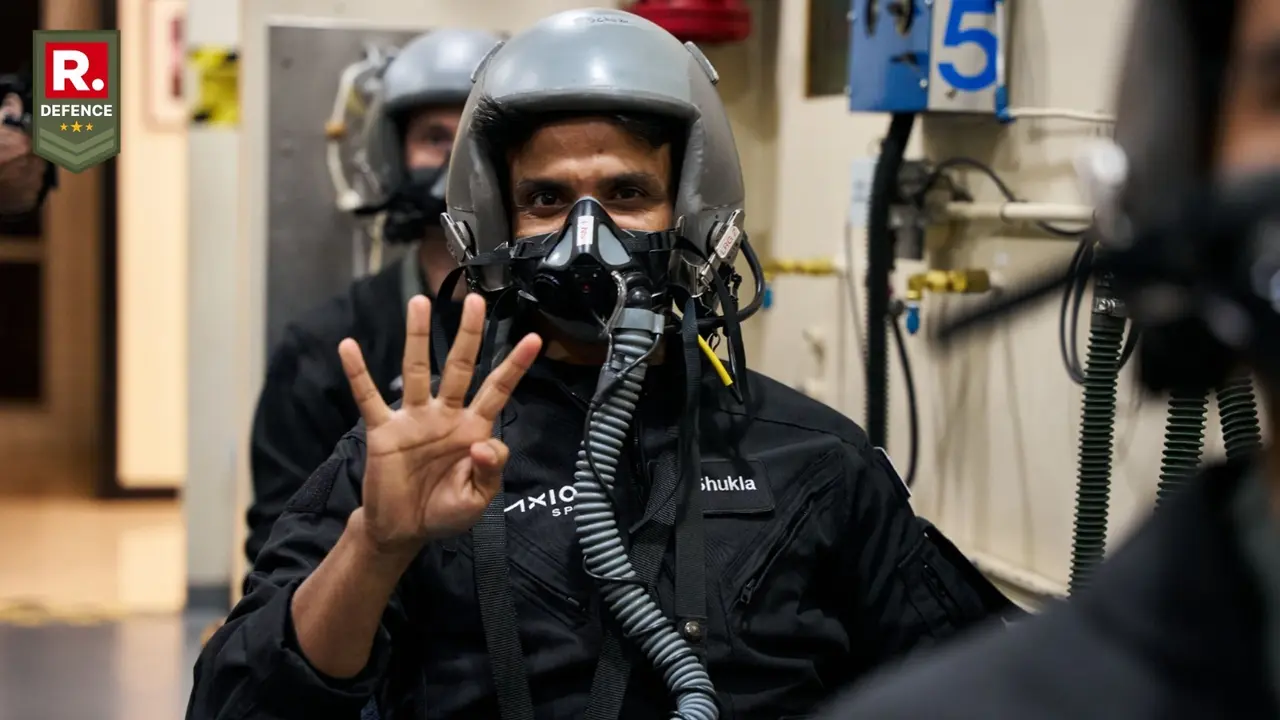Updated 8 April 2025 at 17:31 IST
Indian Armed Forces to Get Orbital Playbook as Military Space Doctrine Set for Release by Mid-2025
India is preparing to unveil its first-ever Military Space Doctrine along with a National Military Space Policy.
- Defence News
- 4 min read

New Delhi, India - In a move that signals India's intent to establish a full-spectrum military presence beyond Earth’s atmosphere, Chief of Defence Staff (CDS) General Anil Chauhan has confirmed that India’s first-ever Military Space Doctrine and a supporting National Military Space Policy are on track to be released within the next two to three months. The announcement, made at the third edition of the Indian DefSpace Symposium 2025, comes amid rising global competition for dominance in orbital domains, and growing recognition of space as the next frontier of warfare.
Stressing the need for creating what he described as a “space culture”, General Chauhan said that India must look beyond launches and satellites and instead begin to institutionalise thought leadership in space warfare. “This culture is about seminal research, original doctrines, and strategies for space. It’s not just about creating startups, but about institutions and societies that ideate on space warfare,” he said. The General made it clear that India’s military priority should remain focused on Earth’s orbital layers—Low Earth Orbit (LEO), Medium Earth Orbit (MEO), and Geostationary Orbit (GEO)—which directly impact terrestrial security.
Defence Space Doctrine to Define Use, Defend Assets, and Build Capability
General Chauhan’s statements marked a public shift from passive utilisation of space for communications and reconnaissance to proactive defence and operational strategies. He confirmed that the Defence Space Agency (DSA)—established in 2019 and headquartered in Bengaluru—is now tasked with delivering a doctrinal roadmap that incorporates both defensive and offensive space capabilities. “We are developing satellites for ISR (Intelligence, Surveillance, Reconnaissance) roles with the involvement of ISRO and private industry. The goal is to enhance military capabilities and protect these assets from threats,” he said.

This is expected to complement India’s broader Indian Space Policy 2023, which laid the foundation for public-private partnerships in the space sector, and the upcoming Space Activities Bill 2025, which aims to provide the regulatory architecture for India’s expanding presence in space. “It’s about stimulating the domestic market, fostering international cooperation, and building up state-of-the-art infrastructure to position ourselves as a global leader in space,” he said.
Advertisement
India Eyes $44 Billion Space Economy, Militarisation to Play a Strategic Role
India’s current space economy stands at approximately $8.4 billion, but it’s the government’s projection of growing this to $44 billion by 2033 that has ignited industrial interest. “This growth won’t happen through ISRO alone,” said Jayant Patil, Chairman of the Indian Space Association (ISpA), during his address. “With the government pushing for 52 dedicated military satellites and increasing private participation, we are building a secure, Atmanirbhar space ecosystem that’s ready to meet strategic challenges head-on.”

Patil cited contributions by Indian industry in areas such as surveillance satellites, secure communication systems, electronic jammers, and missile-tracking radars as proof of readiness. “We’ve proven our capabilities. Now it’s about scale and synergy,” he said, while also calling for more structured collaboration between the DRDO, DSA, IN-SPACe, and private sector firms.
Advertisement
Former Air Chief and DSA DG Map Future-Forward Capability Pathways
Retired Air Chief Marshal V.R. Chaudhari provided a technical preview of the direction India’s space force structure could take. He underlined the growing importance of resilient constellations across multiple orbital planes over large, singular satellites. “India must now seize the opportunity to lead in launch-on-demand, onboard edge processing, space-based 5G networks, and even quantum communications,” he said. “In a space domain where civilian and military uses are increasingly intertwined, innovation, collaboration, and resilience are no longer optional.”

Air Vice Marshal Pawan Kumar, Director General of the DSA, delivered an operational overview of India’s ongoing efforts. “Our defence space vision is not built on isolated tech achievements. It’s mission-driven—designed to serve both civil and defence domains with ISR, PNT (Positioning, Navigation, and Timing), secure comms, and post-quantum encryption,” he said. Kumar revealed that 80 per cent of India’s current defence space data is consumed by the strategic community, and called for their involvement in shaping requirements and testing systems. “Our approach must blend speed with security, innovation with integration,” he said.
India Signals Intent to Be a Space Power—With Practical, Defence-Centric Focus
Despite the grandeur often associated with space ambitions, India is taking a pragmatic stance when it comes to military applications. “The realm of interplanetary or intergalactic travel belongs to the world of science fiction for now,” CDS Chauhan said with clarity. “Our responsibility lies in clearly defining and operating within the scope of military space.”
The Military Space Doctrine, once released, will likely solidify India’s transition from a space-utilising to a space-dominant military power. At a time when adversaries like China and global peers such as the US and Russia are moving aggressively to secure orbital supremacy, India appears ready to join the high ground—on its own terms, with its own doctrine, and through its own orbit.
Watch-Ax-4 Crew Onboarding
Published By : Yuvraj Tyagi
Published On: 8 April 2025 at 17:31 IST
